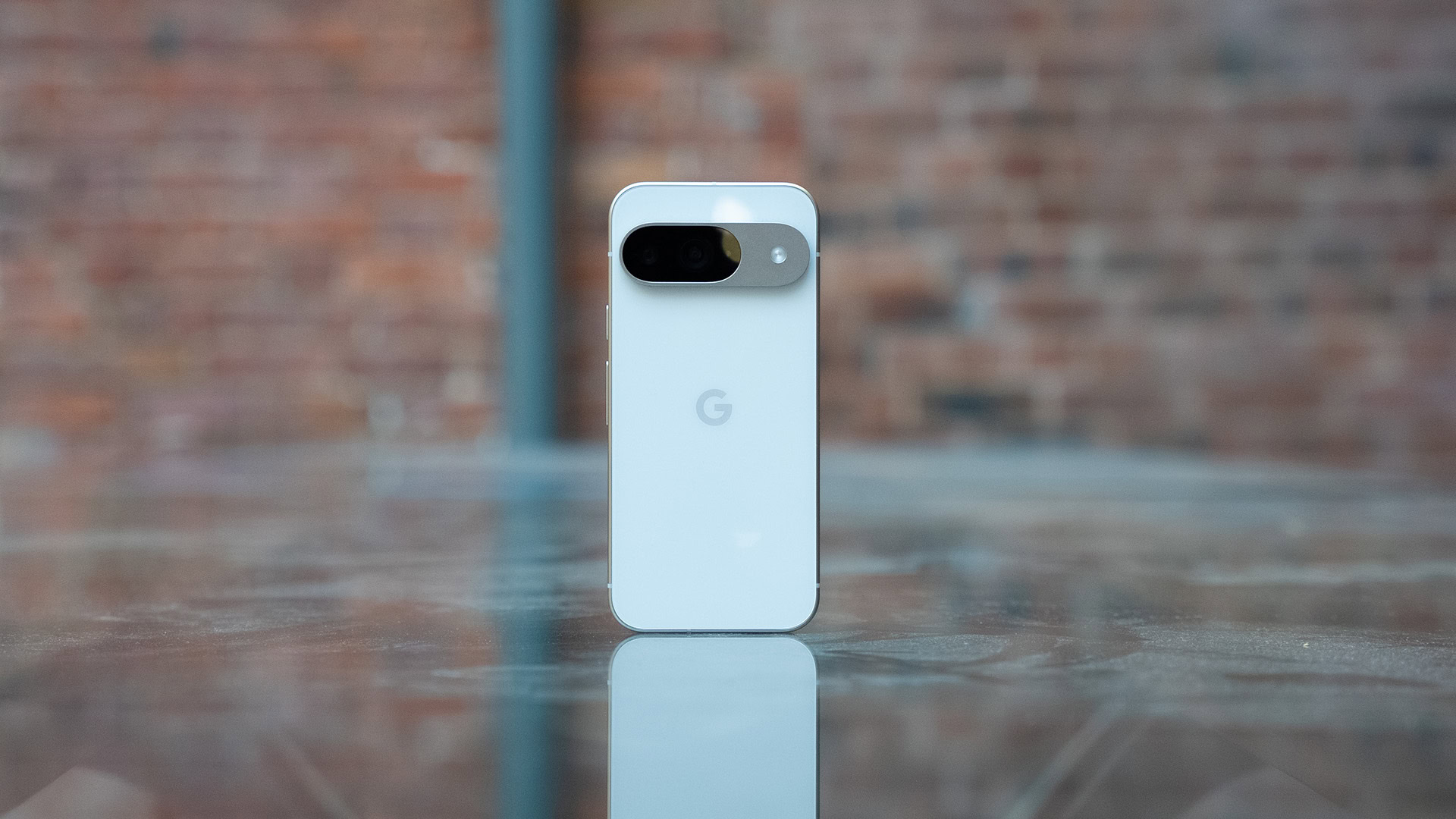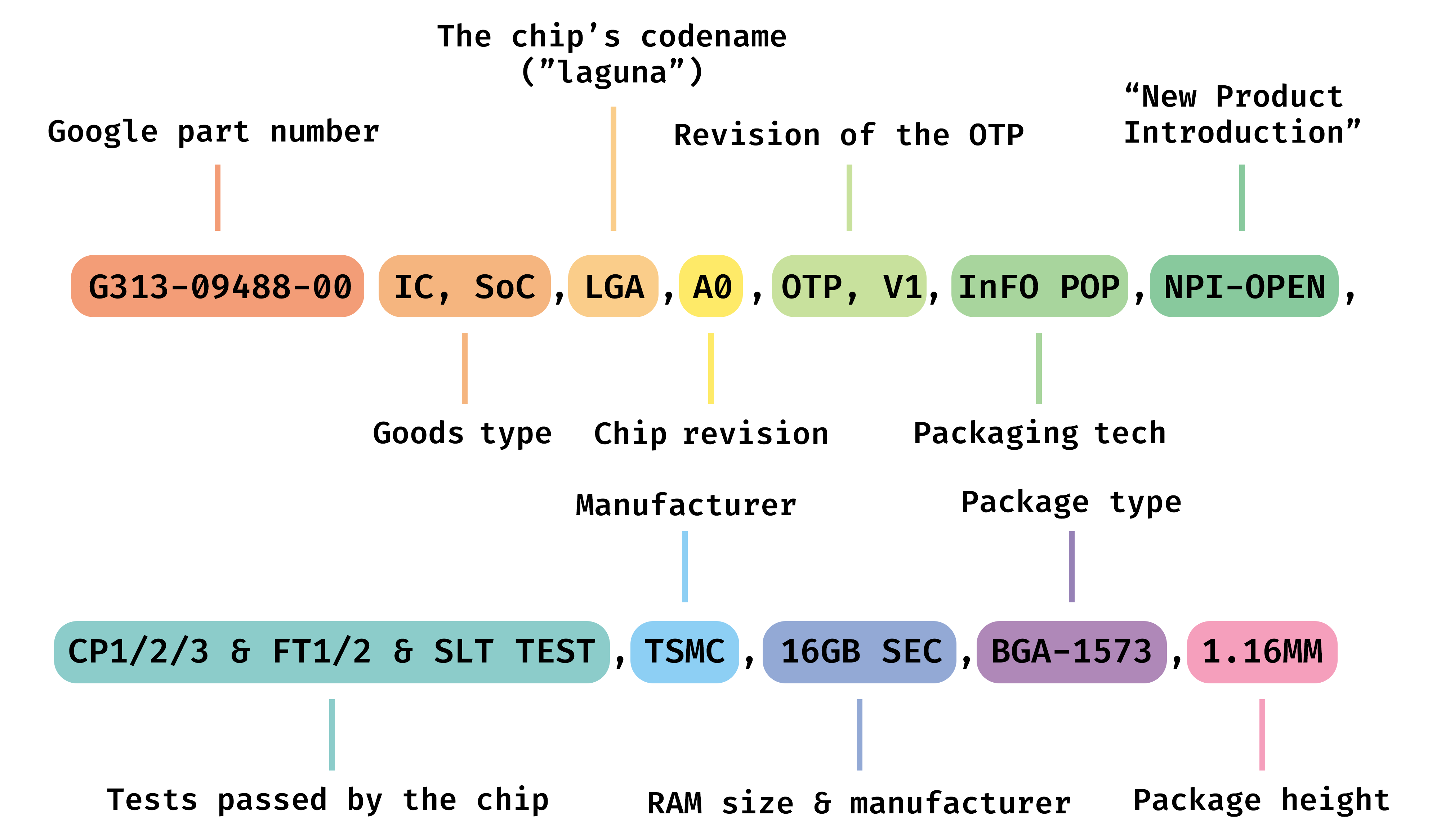Affiliate links on Android Authority may earn us a commission. Learn more.
Google Pixel 10 series rumors: Everything we know so far and what we want to see
Published onMarch 12, 2025
The Google Pixel 9 series features a slightly revamped design, three different Pro models, a stronger emphasis on AI, and plenty of other changes. It also represents one of the biggest deviations from the Pixel formula that we’ve seen in years.
Despite several notable changes, the Pixel 9 still retains several of the most criticized aspects of the Pixel series, including limited storage options and a less competitive SoC compared to other phones. With all of this in mind, what can we expect from the Pixel 9’s successor? Here’s everything we know about the Google Pixel 10 series, including the Pixel 10 Pro Fold.
Google Pixel 10: At a glance
- When is it expected to come out? It's too early to say definitively, but we would expect Google to stick with the new launch window it used for the Pixel 9 series. Therefore, there's a good chance we could see it as early as August 2025.
- What new features could there be? We expect to see a Tensor G5 chip produced by TSMC, as well as the new Pixel Sense assistant.
- How much might it cost? It's unknown if Google will raise prices or stick to the same prices as the 2024 models. For now, we're leaning more toward the latter.
Will there be a Google Pixel 10?

Google’s Pixel 9 hit store shelves last August, so there’s still a lot of time before we’ll see the Pixel 10. But it’s extremely likely we’ll see it in late 2025 unless Google makes a major change to its usual strategy. That’s still over six months away and so we’re still in the early days when it comes to rumors. That said, we’ve actually heard a fair amount considering how far away the release is.
Back in 2022, we revealed an exclusive look at Google’s Pixel roadmap through 2025, as detailed by sources familiar with Google’s plans. This included a few mentions of the Pixel 10, including even more models, and the possibility of a Z Flip competitor.
It’s hard to say if that original roadmap still holds today, though we can say many of its predictions were fairly accurate. Since then, we’ve also heard a few other bits about the Pixel 10. In May, rumors heated up that Google would ditch Samsung and start using TSMC, starting with the Tensor G5, which we later provided further evidence of. We’ve since heard reports that this chip has now entered production.
Perhaps the biggest piece of early evidence for the existence of the Pixel 10 series is an Android Headlines report on September 16 which revealed apparent codenames. The Pixel 10 is said to be called “Frankel,” the Pixel 10 Pro is “Blazer,” the Pixel 10 Pro XL is “Mustang,” and the Pixel 10 Pro Fold will apparently be called “Rango.”
More recently, SmartPrix has spotted the Pixel 10 devices in the GSMA database, complete with their model numbers. The Pixel 10 is listed with model numbers “GLBW0” and “GL066,” while the Pixel 10 Pro sports “G4QUR” and “GN4F5.” The Pixel 10 Pro XL has the model number “GUL82,” and the Pixel 10 Pro Fold is tagged with “GU0NP.”
These registrations usually mean Google is in the final stages of getting regulatory approvals for its next generation of phones. Since these records come directly from Google’s official filings, it’s practically confirmation that the Pixel 10 series is indeed happening and on its way.
What is the most likely Google Pixel 10 release date?

- Google Pixel 9 — September 4, 2024
- Google Pixel 8 — October 12, 2023
- Google Pixel 7 — October 13, 2022
Looking at the Pixel’s historical release windows, the phone is typically announced in late September or early October. This changed with the Pixel 9, as the new series was announced in late August and arrived on September 4. It’s possible this was a one-time change to bring the Fold series into the mainline Pixel strategy, but at the very least, we are confident you’ll see the Pixel 10 series sometime in late summer or early fall of 2025.
What rumored specs and features could the Google Pixel 10 have?

We’re still in the early days of the rumor mill, but there’s more than enough information to start building a picture of what to expect. We’ll dive into all of the features and specs we’ve heard of so far.
Design
We got our first render leaks of the Pixel 10 family in the middle of March. AndroidHeadlines, in collaboration with tipster OnLeaks, shared CAD images of all three models. Based on the renders, it appears Google will play it extremely safe in terms of design. So safe, in fact, that it looks like the company made almost no design changes at all.
The dimensions are said to be nearly the same as those of the Pixel 9 series, with the base model measuring 152.8 x 72 x 8.6mm, the Pro 152.8 x 72 x 8.6mm, and the Pro XL 162.7 x 76.6 x 8.5mm. There’s only a 0.1mm difference in thickness between these phones and their last-generation counterparts. On the positive side, this means that your Pixel 9 series case should also work on the Pixel 10.
However, there is one big notable difference between the base model Pixel 10 and previous generations. The leak claims that the vanilla model will have a triple-camera setup for the first time. It appears this setup will include a main camera, telescope lens, and periscope zoom.
In addition, this leak claims that the screen sizes will stay the same as before. It’s also expected that the bezels will stay the same size as well.
Features
AI has long been a focus on Pixel phones and that will be no different on the Pixel 10 series. We’ll get into it a little later on, but the Tensor G5 will have an improved TPU. Android Authority has reviewed documents from Google’s gChips division that say this upgrade will allow the Pixel 10 to have “Video Generative ML” features. The description for the feature reads, “Post-capture Generative AI-based Intuitive Video Editing for the Photos app.” This is only a guess, but it sounds like Google will let users edit their videos more easily by using AI that actually understands the video.
Pixel 10: Which feature would you like to see the most?
Recently we learned Google may also be testing the MediaTek T900 modem for its Pixel 10 series, though this could definitely change ahead of launch.
It seems we can also expect several AI photo editing features. One such feature is called “Speak-to-Tweak,” which seems to be an LLM-based editing tool. Another is called “Sketch-to-Image,” which would allow you to sketch something and have AI turn it into an image, similar to Samsung’s Galaxy AI feature. There’s also a feature called “Magic Mirror,” but we don’t have any information on what it could be. Tensor G5 should also be able to run Stable Diffusion-based models locally.
We don’t know what camera lenses Google will use for the Pixel 10 series yet, but we do have some camera details. In the documents we looked at, we learned that Tensor G5 supports 4K 60fps HDR video, in contrast to previous models that only supported 4K 30fps HDR video.
Tensor G5
Google has essentially used a modified version of Exynos to build its Tensor series in the past, leading to less-than-stellar performance. The Tensor G4 isn’t a bad chip, per se, but it lacks raw power and relies heavily on throttling during heavy loads to keep phone temperatures down. Although Snapdragon chips (produced by TSMC) also throttle to manage heat, their initial performance is strong enough that these drops are less noticeable. The good news is that several rumors, including our own exclusive report, suggest that Google is making a switch to TSMC next year.
Let’s start off with the earliest rumor of the bunch, which surfaced in July 2023. A report claimed that plans to develop a fully custom Tensor chip was delayed from 2024 to 2025 and that TSMC would produce this silicon on a 3nm process. In mid-May 2024, a leaker who goes by Revegnus on X (formerly Twitter) corroborated this rumor in a now-deleted post, saying that Tensor chipsets from the Pixel 10 series onwards will be manufactured by TSMC. They also asserted that the Tensor G5 will use TSMC’s 3nm process.
Our exclusive report, mentioned at the beginning of this section, provides further proof of this new Tensor by TSMC SoC. In a shipping manifest, we found proof of the existence of a Tensor G5 chip sample along with an abbreviation of its codename “Laguna.” It also directly mentions TSMC and InFO POP — packaging technology exclusive to TSMC. From this document, we also learned that it will have 16GB of package-on-package RAM manufactured by Samsung Electronics Company (SEC).

If it wasn’t sure enough by now, a report from BusinessKorea also corroborates the switch to TSMC rumor. However, this report adds that Samsung’s 3nm process delivers 10-20% lower performance than TSMC’s 3nm process.
In July, we heard a rumor that cites “supply chain sources” claiming that TSMC was nearly ready for initial production of the Tensor G5 chip. At the time, it was said the processor was just reaching the tape-out stage.
Late October treated us to two big leaks regarding the Tensor G5. In documents from Google’s gChips division, viewed by Android Authority, we found confirmation that the Pixel 10’s chip will be manufactured on TSMC’s 3 nm-class N3E. This is the same process node Apple uses for the iPhone 16 Pro’s A18 Pro and its M4 chips.
The second leak from October also involves documents we reviewed from Google’s gChips division. We found that Google has upgraded the CPU cluster, giving the mid cluster five Cortex-A725 cores, with the little cluster shrinking to only two Cortex-A520 cores. However, the firm is keeping the same single Arm Cortex-X4 primary core from before.
| Tensor G3 (“zuma”) | Tensor G4 (“zumapro”) | Tensor G5 (“laguna”) | |
|---|---|---|---|
Big cluster | Tensor G3 (“zuma”) 1x Arm Cortex-X3 | Tensor G4 (“zumapro”) 1x Arm Cortex-X4 | Tensor G5 (“laguna”) 1x Arm Cortex-X4 |
Mid cluster | Tensor G3 (“zuma”) 4x Arm Cortex-A715 | Tensor G4 (“zumapro”) 3x Arm Cortex-A720 | Tensor G5 (“laguna”) 5x Arm Cortex-A725 |
Little cluster | Tensor G3 (“zuma”) 4x Arm Cortex-A510 | Tensor G4 (“zumapro”) 4x Arm Cortex-A520 | Tensor G5 (“laguna”) 2x Arm Cortex-A520 |
We don’t know as much about the GPU, but we have a few breadcrumbs to follow. It will support ray tracing, which is something new for Tensor chips. We’re also expecting support for GPU Virtualization, which would allow the use of accelerated graphics in a virtual machine.
| Tensor G3 (“zuma”) | Tensor G4 (“zumapro”) | Tensor G5 (“laguna”) | |
|---|---|---|---|
GPU | Tensor G3 (“zuma”) Arm Mali-G715 (7 cores) | Tensor G4 (“zumapro”) Arm Mali-G715 (7 cores) | Tensor G5 (“laguna”) IMG DXT (2 cores) |
Frequency | Tensor G3 (“zuma”) 890 MHz | Tensor G4 (“zumapro”) 940 MHz | Tensor G5 (“laguna”) 1100 MHz |
Ray tracing | Tensor G3 (“zuma”) Not supported | Tensor G4 (“zumapro”) Not supported | Tensor G5 (“laguna”) Supported |
GPU Virtualization | Tensor G3 (“zuma”) Not supported | Tensor G4 (“zumapro”) Not supported | Tensor G5 (“laguna”) Supported |
The final part of the leak touched on AI and the TPU. It appears that the Tensor G5’s TPU is modestly faster than the one on the Tensor G4. The trillions of operations per second (TOPS) value is almost 40% larger, but that doesn’t translate well to real-world performance, as internal benchmarks suggest it’s only 14% faster. The new TPU also comes with new features, such as small embedded RISC-V cores and support for on-device training.
| Tensor G3 (“zuma”) | Tensor G4 (“zumapro”) | Tensor G5 (“laguna”) | |
|---|---|---|---|
TOPS | Tensor G3 (“zuma”) 13 / 6.5 TOPS (INT8/FP16) | Tensor G4 (“zumapro”) 13 / 6.5 TOPS (INT8/FP16) | Tensor G5 (“laguna”) 18 / 9 TOPS (INT8/FP16) |
Performance improvement over previous generation | Tensor G3 (“zuma”) +65% | Tensor G4 (“zumapro”) 0 | Tensor G5 (“laguna”) +14% |
One other interesting detail we dug up is that the die size is 121 mm^2. Apple’s A18 Pro is only 105 mm^2, making the G5 a noticeably larger chip.
Pixel Sense

Pixel Sense will be Google’s next-gen assistant debuting with the Pixel 10, having evolved from the previously rumored “Pixie” project. Designed to provide a truly contextual and personalized smartphone experience, it integrates data from various Google apps, such as Calendar, Gmail, Maps, Chrome, and YouTube, to offer intelligent, real-time predictions. The assistant is built to help users complete tasks more efficiently, suggest relevant information when needed, and adapt to individual habits and interests over time.
Pixel Sense is expected to operate entirely on-device, ensuring faster responses and improved privacy by keeping user data local. It also processes screenshots and media files, learning from metadata to enhance organization and search capabilities. Google describes it as a way to offer proactive assistance without requiring an internet connection, likely powered by its Gemini Nano AI model.
What might the Google Pixel 10 price be?

- Google Pixel 9 — $799
- Google Pixel 8 — $699
- Google Pixel 7 — $599
- Google Pixel 9 Pro — $999
- Google Pixel 8 Pro — $999
- Google Pixel 7 Pro — $899
- Google Pixel 9 Pro XL — $1,099
- Pixel 9 Pro Fold — $1,799
- Pixel Fold — $1,799
It’s still way too early for any leaks or rumors about the price of the Pixel 10 series. As such, we’ll just have to rely on previous trends to make a guess. Above, you can see what the prices were for the last three years. The Pixel 7 and Pixel 7 Pro sold for $599 and $899, respectively. Last year, unfortunately, the price shot up by $100 for both the Pixel 8 and Pixel 8 Pro. And this year, the Pixel 9 series launched with three models for the first time. The vanilla Pixel 9 went up to $799, while the Pro stayed at $999, and the Pro XL sold for $1,099. As for Google’s foldables, the starting price has stayed the same so far.
If we had to guess, it’s probably more likely than not that these prices will remain the same for 2025. That said, we wouldn’t be surprised if one or even all four of the models jumped up by $100 as Google continues to angle its phones as premium devices. We’ll have to wait to see if this prediction comes true.
Should you wait for the Google Pixel 10?

Considering the Pixel 10 is still far away, we’d usually advise against waiting. However, the situation is a bit more nuanced this time. The Pixel 9 is a solid device, but the Pixel 10 could represent a much larger leap forward in performance, thanks to the switch to TSMC. Additionally, next year’s Pixel is a significant milestone for the brand, marking ten years since the line debuted. This could mean we’ll see plenty of other enhancements to celebrate the occasion. Maybe even a Pixel 10 Flip?

Excellent build quality, refined design
Extensive update policy

Excellent build quality
Flexible, capable cameras
Reliable update commitment

Gorgeous display
Seven years of software updates
If you don’t absolutely need a new phone (say, if you’re using a Pixel 6, 7, or newer and can hold out another year), the Pixel 10 might actually be worth the wait. This is especially true if you’re not thrilled with the design changes or new AI features in the Pixel 9. However, if you like what Google has done with the Pixel 9, there shouldn’t be anything holding you back from upgrading now. Just keep in mind that its successor may offer a much larger performance boost than any Pixel since the introduction of the Tensor processor.
If you’re looking for a device with strong AI capabilities and more raw performance but don’t want to wait for the Pixel 10, the Galaxy S24 series ($859.99 at Amazon) might be the right choice, particularly the S24 Ultra ($1419.99 at Amazon). While the latest Galaxy S series may not match Google in AI prowess, it’s a close second in the Android world.